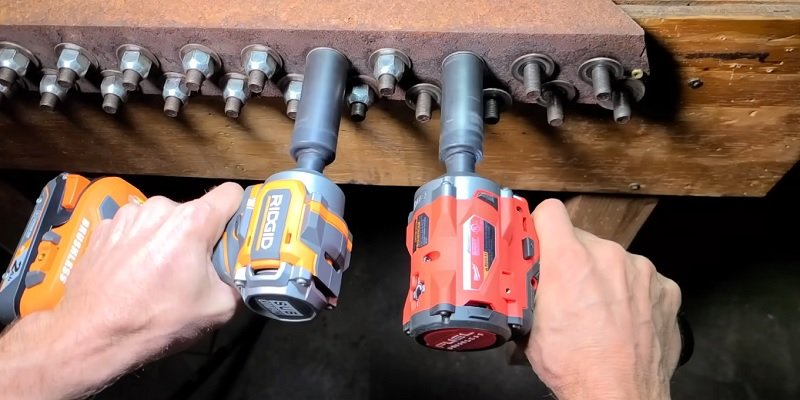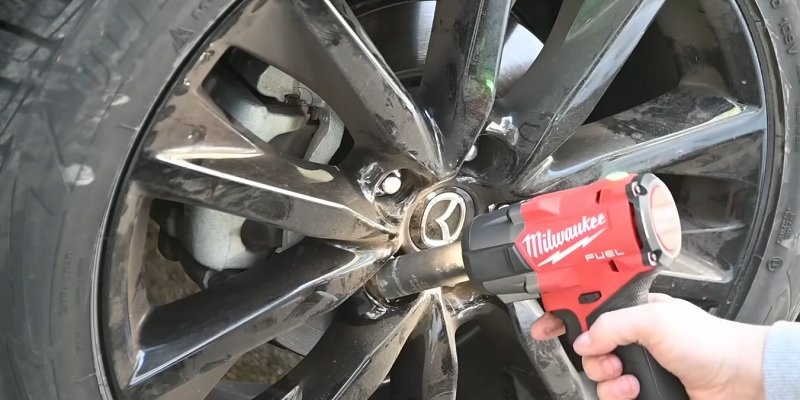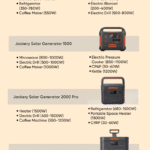Disclosure: This post contains affiliate links and I will be compensated if you make a purchase after clicking through my links. Learn More
An air impact wrench works by utilizing compressed air to generate rotary motion, providing a powerful and precise force to loosen or tighten bolts and nuts. An air impact wrench is a versatile tool commonly used in automotive and construction industries.
This handy tool relies on the force generated by compressed air to swiftly loosen or tighten bolts and nuts. By harnessing the power of air, an air impact wrench delivers a strong, rotary motion, allowing users to effortlessly tackle various tasks.
Whether you need to remove stubborn lug nuts or tighten heavy-duty fasteners, an air impact wrench provides the necessary torque with ease. We will explore the workings of an air impact wrench in detail, highlighting its key components and how it operates.

Understanding The Mechanism Of An Air Impact Wrench
Introduction To Air Impact Wrenches
An air impact wrench is a powerful tool commonly used in automotive repair and industrial applications. It is designed to quickly and efficiently loosen or tighten nuts and bolts, saving both time and effort. Understanding how an air impact wrench works can help you make the most of this versatile tool.
Components Of An Air Impact Wrench

An air impact wrench consists of several key components that work together to generate the powerful torque needed for fastening and loosening tasks. These components include:
Air Motor: The heart of the air impact wrench is the air motor. This motor converts compressed air into rotational power. It is typically located at the back of the tool and is powered by an air compressor.
Anvil: The anvil is the square drive located at the front of the air impact wrench. It is the part that comes into direct contact with the nut or bolt being fastened or loosened. The anvil is designed to withstand high levels of torque without slipping or stripping.
Hammer Mechanism: The hammer mechanism is responsible for the fast, repetitive blows that generate the necessary torque. When the trigger is pressed, the compressed air flows into the hammer mechanism, causing a hammer to rapidly spin. The spinning hammer strikes against an anvil, creating a powerful rotational force.
Trigger and Control: The trigger is the part of the air impact wrench that controls the flow of compressed air and the speed of the hammer mechanism. By varying the pressure on the trigger, the user can adjust the speed and torque output of the tool.
Explanation Of The Impact Mechanism
The impact mechanism of an air impact wrench is what sets it apart from other types of wrenches. It allows the tool to generate high amounts of torque with minimal effort. Here’s how it works:
1. When the trigger is pressed, compressed air flows into the hammer mechanism.
2. The compressed air causes a hammer to rapidly spin.
3. As the hammer spins, it strikes against an anvil, creating a forceful impact.
4. This impact generates a high amount of torque that is transferred to the nut or bolt being fastened or loosened.
5. The repetitive blows of the hammer mechanism help to break loose stubborn fasteners or tighten them with great force.
The impact mechanism of an air impact wrench is highly efficient, allowing for rapid and powerful fastening or loosening of nuts and bolts. It is ideal for tasks that require high torque, such as automotive repairs, construction, and heavy machinery maintenance.
By understanding the mechanism of an air impact wrench and its components, you can use this powerful tool effectively and efficiently in various applications. Whether you are a professional mechanic or a DIY enthusiast, an air impact wrench is a valuable addition to your tool collection, making fastening and loosening tasks a breeze.
Different Types Of Clutches Used In Air Impact Wrenches
In an air impact wrench, the clutch mechanism plays a crucial role in delivering the powerful twisting motion that allows it to loosen or tighten nuts and bolts with ease. There are various types of clutches used in air impact wrenches, each designed to suit different applications and provide optimal performance. Let’s take a closer look at some of the most common types of clutches used in these tools:
1. Pin Clutch
The pin clutch is one of the simplest and most reliable clutch mechanisms used in air impact wrenches. It consists of a pin that connects the output shaft of the wrench to the anvil. When the wrench encounters resistance, the pin slips to prevent over-torquing and potential damage to the bolt or wrench.
2. Double Dog Clutch
The double dog clutch, also known as a dog clutch or pawl clutch, employs two “dogs” or small teeth that engage and disengage with a corresponding gear or ring. This clutch mechanism provides excellent torque control, making it ideal for applications where precision and accuracy are required.
3. Two-jaw Clutch
The two-jaw clutch, also called a twin-claw or dual-claw clutch, uses two interlocking jaws that engage in a rotating motion when torque is applied. This type of clutch offers high torque output and is commonly used in heavy-duty air impact wrenches for demanding applications.
4. Twin-lobe Clutch
The twin-lobe clutch, also known as a dual-lobe or dual-pawl clutch, utilizes two lobes or projections that engage and disengage with each other. This design ensures smooth operation and efficient transfer of torque, making it ideal for both light-duty and heavy-duty tasks.
5. Twin Hammer Clutch
The twin hammer clutch is a popular clutch mechanism used in air impact wrenches. It features two hammers that rotate and strike against an anvil to deliver powerful torque. This design allows for rapid, repeated impacts, making it highly efficient for removing stubborn bolts and nuts.
6. Triple-lobe Clutch
The triple-lobe clutch is a variation of the twin-lobe clutch, with an additional lobe for enhanced torque output. This clutch mechanism is often found in high-performance air impact wrenches, where maximum power and efficiency are required.
In conclusion, the clutch mechanism is a critical component of an air impact wrench, determining its torque output, precision, and durability. Understanding the different types of clutches used in these tools can help you choose the right air impact wrench for your specific needs and achieve efficient and effective results in your projects.
The Working Principle Of An Air Impact Wrench
Step-by-step Breakdown Of How An Air Impact Wrench Works
An air impact wrench is a powerful tool commonly used in automotive and industrial settings to tighten or loosen bolts and fasteners. Its working principle involves a series of intricate mechanical processes that allow it to deliver high torque without exerting excessive effort. Here is a step-by-step breakdown of how an air impact wrench works:
Step 1: When triggered, compressed air from an external source enters the tool through an inlet valve.
Step 2: The compressed air flows into a chamber called the rotor housing, where it is guided towards the rotor assembly.
Step 3: Inside the rotor assembly, the air pressure causes a series of vanes or paddles to rotate rapidly around a central shaft.
Step 4: As the vanes rotate, they create a centrifugal force that pushes the air outwards towards the edges of the rotor housing.
Step 5: The rapidly rotating vanes also create a swirling motion within the rotor housing, resulting in a continuous supply of compressed air to the output side.
Step 6: At the output side, the compressed air exits the rotor housing and enters an anvil chamber.
Step 7: The anvil chamber houses a hammer mechanism that is connected to the output shaft of the wrench.
Step 8: When the air enters the anvil chamber, it exerts pressure on the hammer mechanism, causing the hammer to strike against the anvil.
Step 9: The repetitive striking motion of the hammer against the anvil generates the rapid rotations needed to tighten or loosen bolts efficiently.
Explanation Of How The Air Pressure Drives The Mechanism
The air pressure generated by the compressed air source is the driving force behind the mechanism of an air impact wrench. It powers the rotation of the rotor assembly, which, in turn, enables the hammer mechanism to generate the necessary torque.
The higher the air pressure, the faster the rotations and the greater the potential torque output of the wrench. Manufacturers typically design air impact wrenches to operate within a specific range of air pressure to ensure optimal performance and prevent damage to the tool.
Role Of The Clutch In Transmitting Torque
The clutch plays a crucial role in transmitting torque from the hammer mechanism to the output shaft of the air impact wrench. It ensures that the torque generated by the hammer strikes is effectively transferred to the fastener being tightened or loosened.
The clutch mechanism engages and disengages as needed, allowing the wrench to deliver the desired amount of torque while preventing potential damage caused by excessive force.
Different types of clutches, such as pin clutches, double dog clutches, and twin hammer clutches, are used in air impact wrenches to provide varying levels of torque and control.
Advantages Of Using An Air Impact Wrench
An air impact wrench is a powerful tool that offers numerous advantages over manual tools. Whether you are a professional mechanic or a DIY enthusiast, understanding these advantages can help you make an informed decision when it comes to choosing the right tool for your projects.
Increased Efficiency Compared To Manual Tools
One of the primary advantages of using an air impact wrench is its increased efficiency compared to manual tools. With its powerful torque output, the air impact wrench can quickly remove stubborn nuts and bolts that would otherwise require a great deal of effort and time with a manual wrench. It makes tasks such as changing tires or performing automotive repairs much faster and smoother.
Versatility For Various Applications
The versatility of an air impact wrench makes it suitable for a wide range of applications, both in automotive and industrial settings. It can handle tasks such as removing lug nuts, tightening bolts, or assembling machinery and equipment. This versatility makes it an indispensable tool for professionals in various fields, including automotive technicians, construction workers, and manufacturing professionals.
Reduced Physical Strain On The User
Using manual tools for extended periods can lead to physical strain and fatigue. However, with an air impact wrench, the tool does the hard work for you. The powerful air-driven mechanism delivers a high level of torque, eliminating the need for excessive manual force.
This reduces strain on your muscles and joints, making it easier to complete tasks comfortably and without undue physical stress.
Enhanced Productivity In Automotive And Industrial Settings
Air impact wrenches are widely used in both automotive and industrial settings due to their ability to enhance productivity. The efficiency and power of these tools allow mechanics and assembly line workers to complete tasks more quickly, reducing downtime and increasing overall productivity.
In automotive repair shops, for example, the use of air impact wrenches can significantly speed up the process of tire changes and other mechanical repairs.
Factors Affecting The Performance Of An Air Impact Wrench
Factors Affecting the Performance of an Air Impact Wrench
PSI and CFM requirements for optimal operation
When it comes to getting the most out of your air impact wrench, understanding the PSI (pounds per square inch) and CFM (cubic feet per minute) requirements is crucial. These measurements determine the air pressure and flow needed to achieve optimal performance.
A higher PSI rating ensures more power, while a higher CFM rating provides a consistent supply of air to keep the wrench running smoothly.
To find out the specific PSI and CFM requirements for your air impact wrench, refer to the manufacturer’s guidelines. Typically, most impact wrenches require a minimum of 90 PSI and 5 CFM for efficient operation. However, high-torque models may demand higher PSI and CFM ratings to deliver maximum power.
Read Also: How Many Scfm for Impact Wrench?
It is essential to use an air compressor that meets or exceeds these requirements to avoid any performance issues or potential damage to the tool.
Impact wrench size and torque capabilities
The size and torque capabilities of an air impact wrench play a significant role in its overall performance. The size refers to the physical dimensions of the tool, whereas the torque capability determines the wrench’s tightening or loosening power. Both factors are crucial in selecting the right wrench for your specific application.
Smaller impact wrenches are usually more compact, lightweight, and easier to maneuver, making them ideal for tight spaces. However, they tend to have lower torque capabilities, making them more suitable for lighter-duty tasks.
On the other hand, larger impact wrenches are bulkier but offer higher torque capabilities, which make them perfect for heavy-duty applications.
Before purchasing an air impact wrench, consider the tasks you’ll be performing as well as the torque requirements. Ensure the wrench’s size and torque capabilities align with your needs to maximize efficiency and achieve optimal results.
Read More: How Much Torque Does an Air Impact Wrench Have?
Considerations for choosing the right socket size
While the air impact wrench provides the power, the socket is what ultimately delivers that power to the fastener. Hence, choosing the right socket size is crucial for ensuring proper tool operation and avoiding potential damage.
The socket size is determined by the fastener’s dimensions that need to be tightened or loosened. Common socket sizes include 1/2 inch, 3/8 inch, and 1/4 inch, with 1/2 inch being the most common size for heavy-duty applications.
It’s important to match the socket size with the corresponding fastener size to achieve the best possible fit and prevent the socket from slipping or damaging the fastener.
When selecting a socket size, also consider the drive size, which connects the socket to the impact wrench. The most common drive sizes are 1/2 inch and 3/8 inch. It’s crucial to ensure that the drive size of both the wrench and the socket is compatible for seamless operation.
Impact socket materials and their impact on performance
The materials used to manufacture impact sockets can significantly affect their performance and durability. Two common materials used are chrome-molybdenum alloy steel and chrome-vanadium steel.
Chrome-molybdenum alloy steel, also known as chromoly, is commonly used for impact sockets due to its exceptional strength and impact resistance.
This material can withstand the high torque and vibration produced by air impact wrenches, making it suitable for heavy-duty applications. Chromoly sockets also tend to have black phosphate coatings, which provide greater resistance to corrosion.
Chrome-vanadium steel is another popular choice for impact sockets. It offers good strength and durability, making it suitable for general to medium-duty applications. However, compared to chromoly, chrome-vanadium sockets may have a lower tolerance for high torque and vibrations.
Before purchasing impact sockets, consider the nature of your work and the level of durability required. In high-stress applications, opt for chromoly sockets for maximum strength and longevity.
For lighter tasks, chrome-vanadium sockets may provide sufficient performance while being more cost-effective.
To maintain the performance of your air impact wrench, it’s important to consider these factors: PSI and CFM requirements, impact wrench size and torque capabilities, socket size selection, and impact socket materials.
Adhering to these guidelines will ensure that your air impact wrench operates efficiently and effectively, enhancing your productivity and improving overall performance.
Proper Usage And Maintenance Of An Air Impact Wrench
An air impact wrench is a powerful tool that can speed up your workflow and make your job easier. However, like any other tool, it requires proper usage and maintenance to ensure longevity and optimal performance.
By following a few simple guidelines, you can keep your air impact wrench in excellent condition for years to come.
Safety Precautions When Operating An Air Impact Wrench
Your safety should always be a top priority when using an air impact wrench. Here are some important safety precautions to consider:
- Wear appropriate safety gear, including safety glasses, gloves, and ear protection, to protect yourself from potential hazards.
- Inspect the tool and accessories before each use to ensure there are no visible damages or defects.
- Make sure the work area is well-lit and clear of any debris that could cause accidents.
- Hold the wrench firmly using both hands and maintain a stable stance to control the tool’s powerful torque.
- Never use an air impact wrench with compromised or damaged air hoses or connectors.
Essential Maintenance Tips For Longevity And Performance
Maintaining your air impact wrench regularly will not only enhance its performance but also prolong its lifespan. Here are some maintenance tips to keep in mind:
Follow the manufacturer’s instructions for lubricating the tool. Apply the recommended amount of lubricant to keep the internal mechanisms running smoothly.
Inspect the air filters regularly and clean or replace them as needed. Clogged air filters can reduce the tool’s efficiency and increase the risk of damage.
Monitor the air pressure levels and adjust them according to the recommended specifications. Operating an air impact wrench with incorrect air pressure can significantly affect its performance.
Check the fasteners and connections frequently to ensure they are tight. Loose connections can lead to loss of power and potential accidents.
Regularly clean the external surfaces of the wrench to remove any dust or debris. Use a mild detergent and a soft cloth to avoid scratching the tool.
Proper Storage To Prevent Damage And Ensure Functionality
Proper storage of your air impact wrench is crucial for maintaining its functionality and preventing unnecessary damage. Here are some storage tips:
- Store the wrench in a clean and dry area to prevent moisture and corrosion.
- Coil the air hoses neatly and store them away from direct sunlight to avoid deterioration.
- If possible, keep the tool in a sturdy carrying case or box to protect it from accidental impact or dust accumulation.
- Avoid storing the air impact wrench in an area with extreme temperature fluctuations.
- Periodically inspect the storage area for any signs of pests that could cause damage to the tool.
Troubleshooting Common Issues And Solutions
Despite proper usage and maintenance, air impact wrenches can encounter issues. Here are some common problems and their solutions:
| Issue | Solution |
|---|---|
| The wrench has reduced power. |
|
| The wrench is leaking air. |
|
| The wrench is producing excessive noise or vibrations. |
|
By following these usage, maintenance, and troubleshooting tips, you can maximize the efficiency and lifespan of your air impact wrench. Remember, regular care and attention go a long way in ensuring the tool’s optimal performance for your projects.
Frequently Asked Questions For How Does Air Impact Wrench Work?
How Many Psi Do I Need To Run An Air Impact Wrench?
An air impact wrench typically requires a minimum of 90-120 PSI (pounds per square inch) to function effectively. It’s important to check the manufacturer’s recommendations to ensure you have the right amount of air pressure for optimal performance.
Is An Air Ratchet A Less Powerful Version Of An Impact Wrench?
No, an air ratchet is not a less powerful version of an impact wrench. They are different tools used for different purposes. An air ratchet is mainly used for tightening and loosening bolts in confined spaces, while an impact wrench is more powerful and used for heavy-duty tasks like removing lug nuts on cars.
Can You Adjust Torque On An Air Impact Wrench?
Yes, you can adjust the torque on an air impact wrench. By adjusting the setting on the wrench, you can increase or decrease the amount of torque applied to a fastener. This allows for more precise control and prevents overtightening or under tightening of bolts and nuts.
Conclusion
To summarize, an air impact wrench is a powerful tool that uses compressed air to generate torque, making it ideal for heavy-duty automotive and industrial applications. By harnessing the force of air pressure, it efficiently tightens or loosens bolts and nuts, reducing manual effort and increasing productivity.
Understanding how air impact wrenches work can help you choose the right tool for your needs and handle it safely and effectively. Mastering this essential tool will undoubtedly make your mechanical tasks a breeze.








